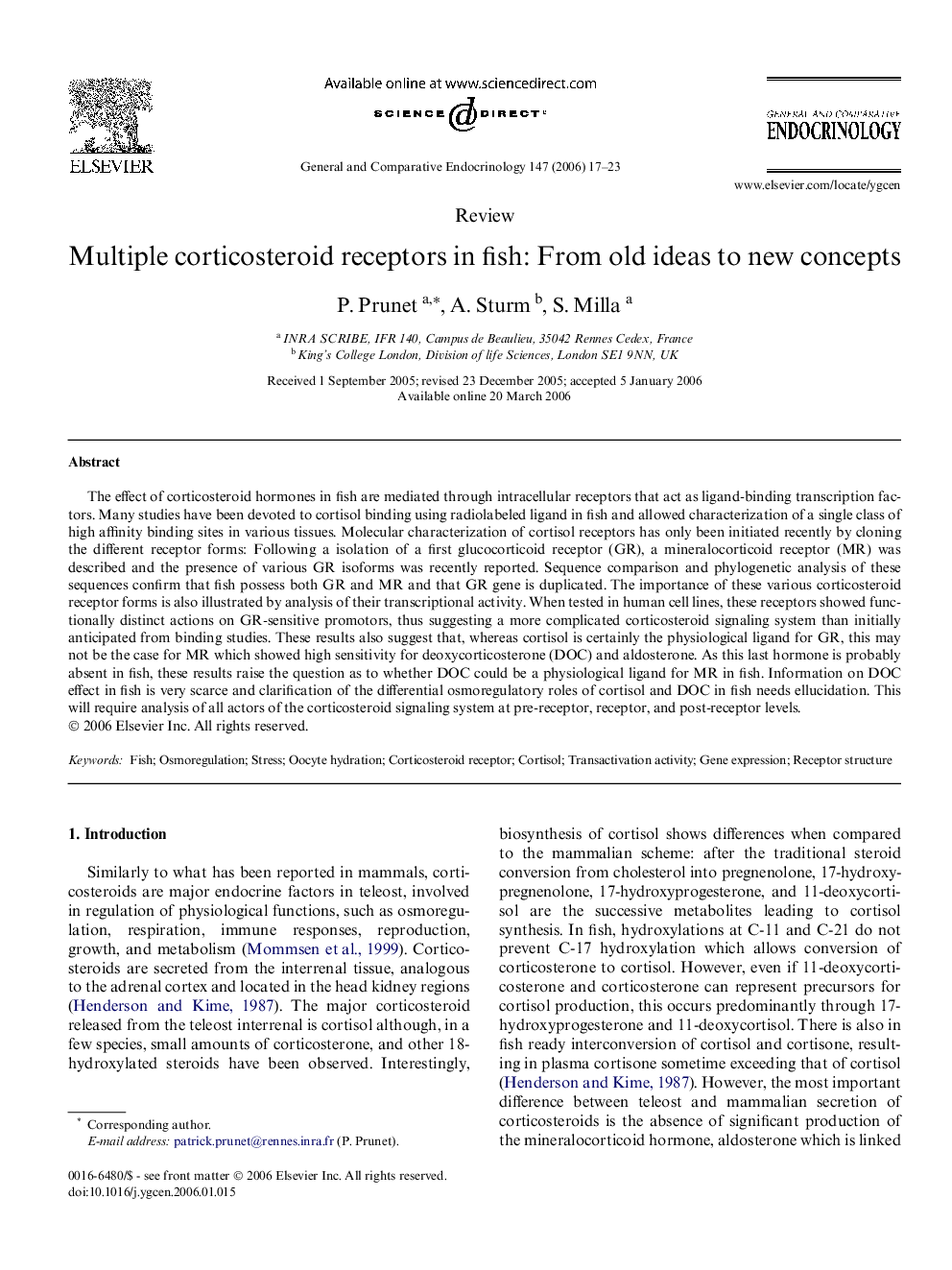| Article ID | Journal | Published Year | Pages | File Type |
|---|---|---|---|---|
| 2802332 | General and Comparative Endocrinology | 2006 | 7 Pages |
The effect of corticosteroid hormones in fish are mediated through intracellular receptors that act as ligand-binding transcription factors. Many studies have been devoted to cortisol binding using radiolabeled ligand in fish and allowed characterization of a single class of high affinity binding sites in various tissues. Molecular characterization of cortisol receptors has only been initiated recently by cloning the different receptor forms: Following a isolation of a first glucocorticoid receptor (GR), a mineralocorticoid receptor (MR) was described and the presence of various GR isoforms was recently reported. Sequence comparison and phylogenetic analysis of these sequences confirm that fish possess both GR and MR and that GR gene is duplicated. The importance of these various corticosteroid receptor forms is also illustrated by analysis of their transcriptional activity. When tested in human cell lines, these receptors showed functionally distinct actions on GR-sensitive promotors, thus suggesting a more complicated corticosteroid signaling system than initially anticipated from binding studies. These results also suggest that, whereas cortisol is certainly the physiological ligand for GR, this may not be the case for MR which showed high sensitivity for deoxycorticosterone (DOC) and aldosterone. As this last hormone is probably absent in fish, these results raise the question as to whether DOC could be a physiological ligand for MR in fish. Information on DOC effect in fish is very scarce and clarification of the differential osmoregulatory roles of cortisol and DOC in fish needs ellucidation. This will require analysis of all actors of the corticosteroid signaling system at pre-receptor, receptor, and post-receptor levels.
